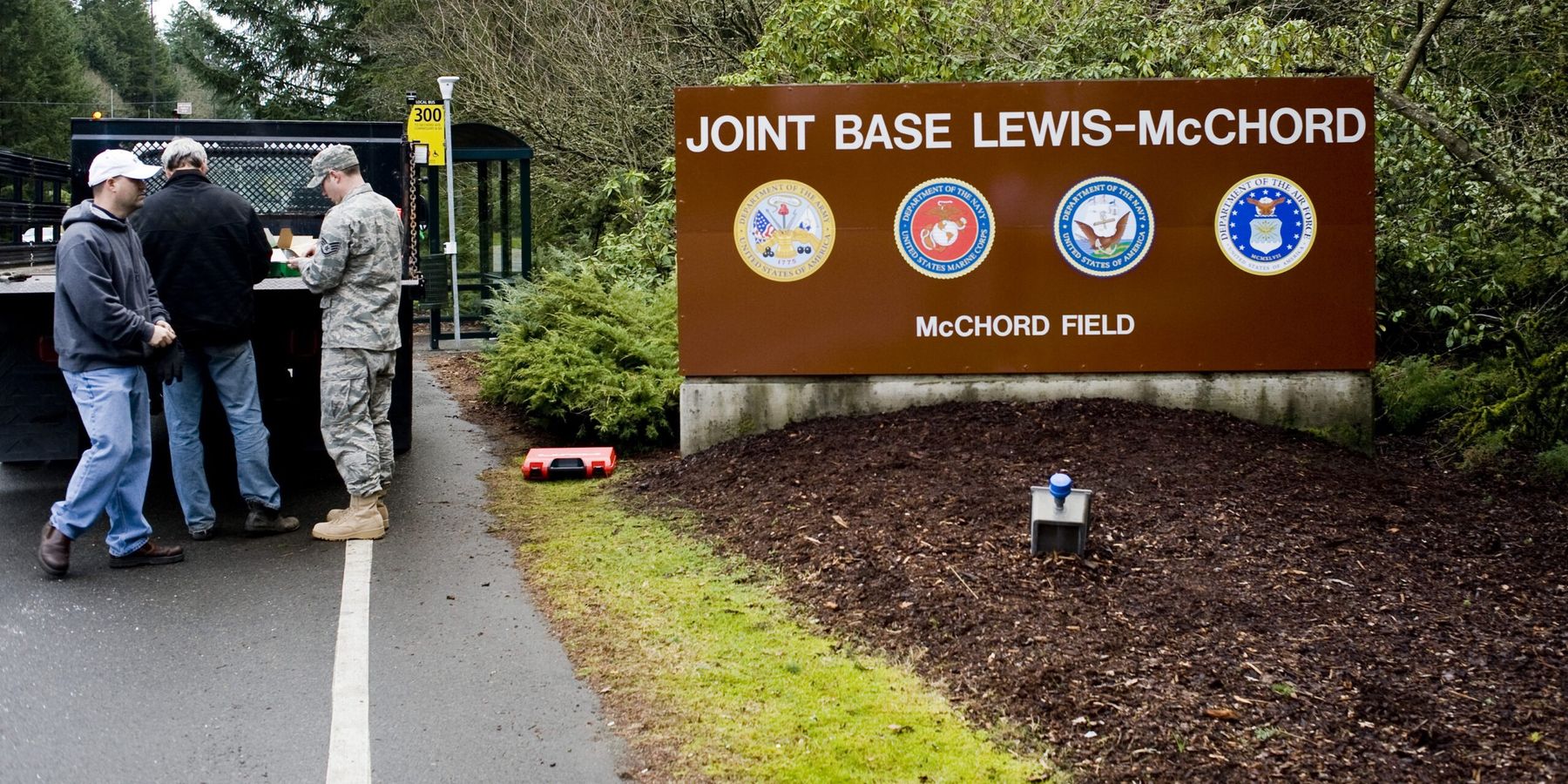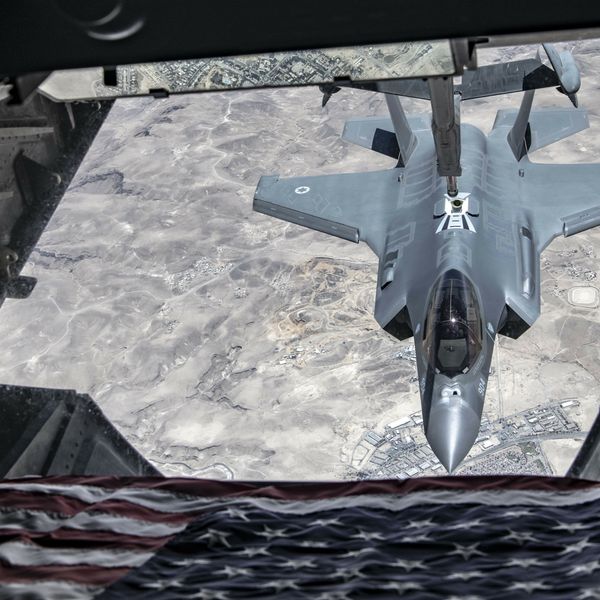The Defense Department plans to delay cleaning up a class of toxic "forever chemicals” that its activities have left at and around military bases across the country — even as it pursues other financially wasteful endeavors that do little to advance, or may even be counterproductive to, U.S. national security.
The Pentagon estimates it will cost $7 billion per year to clean contamination from perfluoroalkyl and polyfluoroalkyl substances, or PFAS, found in a firefighting foam the military still uses. This cost estimate, despite increasing in recent years, ultimately amounts to a small fraction of the DoD’s budget, which grew to a staggering $895 billion for FY2025.
Although the DoD has said little about why it has put off the cleanups this year, environmental groups have previously cited lack of funds as a key issue, warning the DoD has chronically failed to request adequate cleanup funds to address PFAS contamination. Indeed, even as its overall budget continues to balloon, the DoD’s annual funding for cleanups sits at a 30-year low.
With the delay, a new timeline shows clean ups could take up to 10 years, leaving service members and defense community residents in contact with PFAS, often in drinking water and groundwater at and around affected military installations, at further risk of health problems including some cancers.
While putting off critical, yet relatively inexpensive PFAS cleanings, the Defense Department continues to put substantive funds toward questionable projects, whose woes include excessive costs, jeopardizing service member safety, and even risking U.S. national security.
Indeed, the DoD’s prospective Sentinel intercontinental ballistic missile (ICBM) nuclear weapons program is running 80% over-budget, and will cost taxpayers an estimated $141 billion to build. And yet, arms control experts say that a land-based leg of the nuclear triad, which the Sentinel is slated to fulfill, is no longer necessary. Fearing its slated presence on American soil could invite adversarial attack, many call for the Pentagon to pause or terminate the program altogether.
Even pricier, the F-35 fighter jet is slated to cost $2 trillion over its lifetime — despite mounting concerns regarding its viability. The Government Accountability Office (GAO) found in 2023 that the F-35 was only mission-capable 55% of the time.
Meanwhile, the Littoral Combat Ship (LCS), promoted initially as a project that would modernize the Navy, has incurred significant costs during its lifespan — while barely operating. The ships have frequently broken down and their weapons systems often failed, leading to sailors spending more time repairing the LCS than operating them. The program’s value-for-money has proven poor in the process: each LCS costs about $500 million, but the Navy has taken many of them out of commission after five to 10 years, despite an originally estimated 25 year life span. Despite the LCS’s operational issues, the Air Force is still moving to tack on lethality and survivability upgrades to the vessels it has not phased out.
Likewise, the V-22 Osprey military transport and cargo aircraft’s chronic design flaws have led to a ballooning budget to address them: its research and development costs went up 200% from 1986 through 2007.
But the project’s cost increases have come with questionable pay-off. The V-22 Osprey suffers from an abysmal safety record, where more armed service members have been killed in the aircraft’s testing operations than in actual use. Recurring mechanical failures in its gearbox and clutch have led to deadly crashes. Contractors Bell and Boeing marketed the V-22 as a transport carrier that is faster, and has greater range, than helicopters. But, as a safety precaution, the aircraft is currently restricted to flying only 30 minutes away from landing spots — undercutting the V-22’s claims to speed and range in practice.
Other DoD projects on the way suffer from their own issues in kind. To this end, the prospective B-21 bomber could cost taxpayers more than $200 billion, despite critics saying it offers little more in capabilities than the B-2 bomber still in service. The B-21’s supposed stealth capabilities have been a key selling point, but that claim has not panned out for other aircraft, like the F-22 and F-35, that were also promoted along these lines.
And, an endeavor considered unnecessary for U.S. national security for years, lawmakers are now putting billions toward bringing the once-canned sea-launched, nuclear-armed cruise missiles, or SLCM-N, out of retirement: the reconciliation bill passed over the summer included $2 billion for the DoD to work on it.
But weapons experts fear the additional nuclear weapons proliferation SLCM-N would bring might frustrate diplomatic efforts with adversaries. And, its introduction could cause other practical issues. Indeed, conventional strike weapons are more likely to be needed than nuclear weapons in the event of combat; SLCM-s replacing them on some submarines could therefore negatively affect mission readiness.
Finally, costs for the recently proposed Golden Dome missile defense shield, an ambitious endeavor aimed at protecting the entire U.S. from aerial attack, are also off the rails. Even as the project’s plans remain nebulous, the DoD says Golden Dome could cost $175 billion — other estimates suggest it could cost trillions. Rather than advance U.S. national security, moreover, arms control experts say the initiative could compel adversarial states to produce more weapons, perhaps encouraging an arms build-up internationally.
Maintaining the status quo
Despite the Pentagon’s ongoing cleanup delays, lawmakers are moving to gut much-needed funding from PFAS cleanup efforts — even while seeking to hand the Pentagon more money than ever.
Indeed, the House version of the FY2026 National Defense Authorization Act (NDAA), key annual legislation establishing defense priorities, cuts substantive funding — nearly $200 million — from PFAS cleanup efforts around military sites and communities compared with last year, even while surging the overall DoD budget past a record-breaking $1 trillion. The House NDAA also includes a section that delays a ban on the military buying and using the firefighting foam that has PFAS.
And, that same legislation gives runaway DoD projects more funding and resources. To this end, House and Senate versions of the NDAA would provide the Sentinel program with a further $400 million and $2 billion in funding respectively. The HASC NDAA markup, meanwhile, authorized 10 more F-35s than the FY 2026 Presidential Budget Request asked for, while also proposing to fund the SLCM-N with $100 million per missile and warhead.
The Pentagon has previously skirted accountability for PFAS prominence at and around military bases nationwide. Last year, the Air Force claimed no legal obligation toward a previous EPA order to address the likely presence of PFAS in drinking water in Tucson, Arizona — likely caused by the use of PFAS-containing firefighting foam at military sites and airports there.- DOD defies order to clean up 'forever chemicals' in Arizona ›
- Fallout from Navy-flubbed jet fuel spill at Hawaii base ›
















